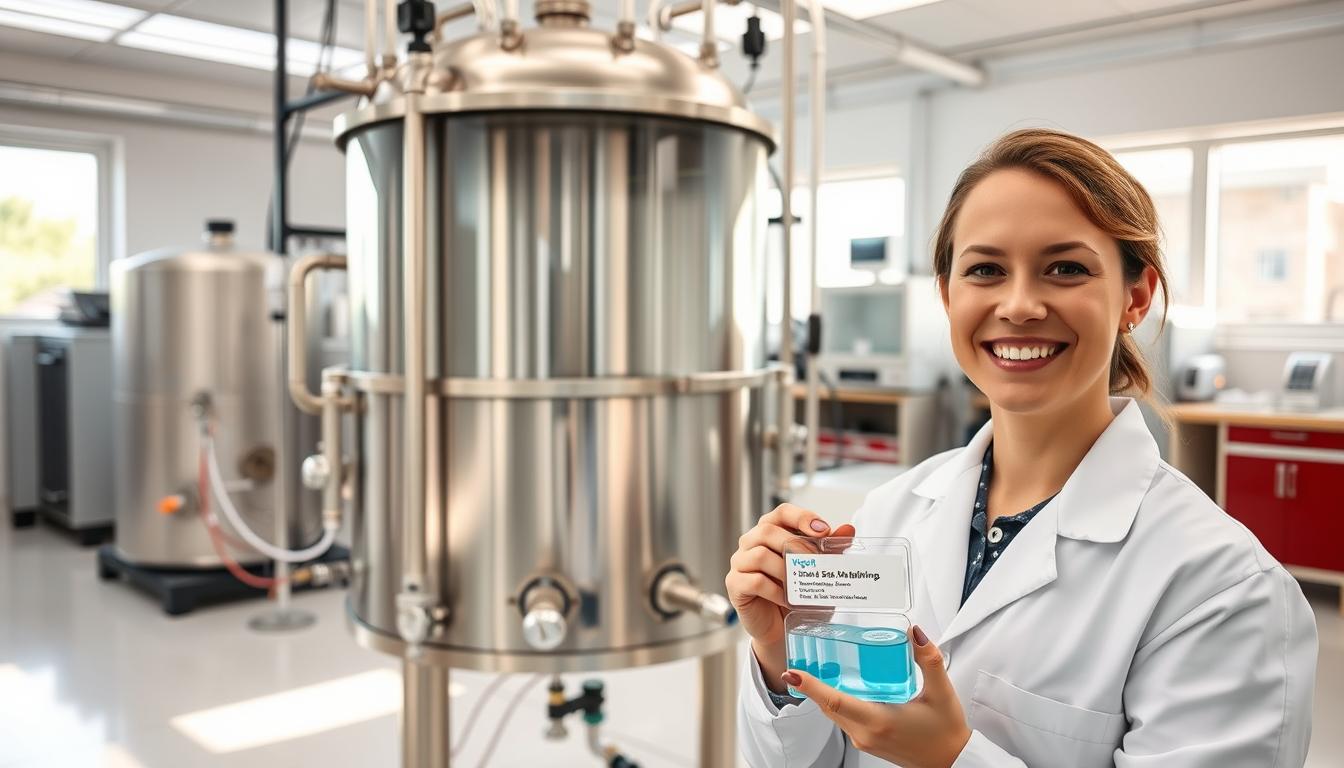Anaerobic digestion is a great process for creating renewable energy, and it is also unique in that it solves many other problems, especially if the feedstock material which is used as the substrate to “fuel” the anaerobic digestion is a waste material, and not a food crop.
Anaerobic Digestion Pros and Cons
Anaerobic digestion (AD) has emerged as a pivotal technology in waste management and renewable energy production, especially within industrialized nations. By breaking down organic waste in the absence of oxygen, AD not only mitigates environmental concerns but also produces valuable byproducts like biogas and digestate. However, like any technology, it comes with its set of advantages and challenges. In this comprehensive guide, we’ll explore the pros and cons of anaerobic digestion, particularly focusing on plants that utilize 100% waste feedstock and those operating commercially in industrialized regions.
Understanding Anaerobic Digestion
Before diving into the benefits and drawbacks, it’s essential to grasp what anaerobic digestion entails. AD is a biological process where microorganisms break down organic materials—such as agricultural waste, food scraps, and sewage—in an oxygen-free environment. This process results in the production of biogas, primarily composed of methane and carbon dioxide, and a nutrient-rich residue known as digestate, which can be used as a fertilizer.
 Figure 1: The Anaerobic Digestion Process
Figure 1: The Anaerobic Digestion Process
The Pros of Anaerobic Digestion
1. Renewable Energy Generation
One of the most significant advantages of AD is its ability to produce biogas, a renewable energy source. Biogas can be used to generate electricity, heat, or even be upgraded to biomethane for use as a vehicle fuel. This not only reduces dependence on fossil fuels but also contributes to lowering greenhouse gas emissions.
2. Waste Reduction and Management
AD offers an effective solution for managing large volumes of organic waste. By diverting waste from landfills, it helps in reducing landfill-related issues such as methane emissions and leachate production. For facilities handling 100% waste feedstock, AD provides a streamlined approach to waste management.
3. Production of Digestate as a Byproduct
The residual digestate from AD is rich in nutrients like nitrogen, phosphorus, and potassium, making it an excellent natural fertilizer. This reduces the need for synthetic fertilizers, promoting sustainable agricultural practices and enhancing soil health.
4. Carbon Footprint Mitigation
By capturing methane—a potent greenhouse gas—from decomposing organic matter, AD significantly reduces the overall carbon footprint of waste management practices. Additionally, utilizing biogas as an energy source offsets carbon emissions from conventional energy production.
5. Economic Benefits
AD plants can generate multiple revenue streams. These include the sale of biogas or electricity, the marketing of digestate as fertilizer, and potential incentives or subsidies for renewable energy projects. This diversification can enhance the economic viability of waste management operations.
6. Enhanced Public Image and Compliance
Implementing AD technology can improve an organization’s image by showcasing its commitment to sustainability and environmental responsibility. Moreover, it helps in complying with stringent waste management and renewable energy regulations prevalent in many industrialized nations.
 Figure 2: Biogas Utilization for Energy Production
Figure 2: Biogas Utilization for Energy Production
The Cons of Anaerobic Digestion
1. High Initial Capital Investment
Setting up an AD plant requires substantial upfront investment. The costs encompass facility construction, specialized equipment, and integration with existing waste management systems. Securing financing can be challenging, especially for smaller operations.
2. Operational Complexity
AD systems are complex and require specialized knowledge to operate efficiently. Factors like temperature control, substrate composition, and microbial health must be meticulously managed to ensure optimal biogas production and prevent system failures.
3. Feedstock Variability
While AD can handle various types of organic waste, inconsistencies in feedstock quality and quantity can impact the digestion process. For plants relying on 100% waste feedstock, maintaining a steady supply of suitable material is crucial but can be unpredictable.
4. Maintenance and Technical Issues
AD plants demand regular maintenance to address wear and tear of equipment, monitor microbial activity, and prevent issues like clogging or corrosions. Technical problems can lead to downtime, affecting both biogas production and waste processing capabilities.
5. Limited Digestate Market
While digestate is a valuable byproduct, its market can be limited based on regional agricultural practices and regulations. In some cases, digestate may require additional processing or certification before it can be effectively utilized, adding to operational costs.
6. Potential Environmental Risks
Improper management of AD systems can pose environmental risks. Leaks of biogas, especially methane, can negate the environmental benefits by contributing to greenhouse gas emissions. Additionally, nutrient runoff from digestate can contaminate water bodies if not appropriately handled.
 Figure 3: Routine Maintenance in Anaerobic Digestion Plants
Figure 3: Routine Maintenance in Anaerobic Digestion Plants
Case Studies: AD Plants in Industrialized Nations
1. Germany’s Biogas Revolution
Germany stands as a leader in utilizing AD technology, with numerous plants converting agricultural and municipal waste into biogas. These plants not only supply renewable energy to the grid but also support local farming communities with high-quality fertilizers. The collaborative approach between government policies and private investments has been pivotal in fostering the growth of AD in the country.
2. The United States’ Growing AD Sector
In the U.S., the AD sector is expanding rapidly, driven by increasing waste generation and favorable renewable energy incentives. Commercial AD plants process various waste streams, including food waste from restaurants and organic waste from municipalities. Despite challenges like high initial costs, the sector’s growth is fueled by technological advancements and heightened environmental awareness.
Balancing the Pros and Cons
While anaerobic digestion offers substantial benefits, it’s essential to approach its implementation with a clear understanding of the associated challenges. Here are some strategies to maximize the advantages while mitigating the drawbacks:
1. Securing Funding and Incentives
Explore available grants, subsidies, and low-interest loans tailored for renewable energy projects. Government incentives can significantly offset the high initial costs, making AD projects more financially feasible.
2. Investing in Training and Expertise
Ensure that the operational team is well-trained in AD processes. Investing in expertise can minimize technical issues, enhance efficiency, and prolong the lifespan of the AD system.
3. Diversifying Feedstock Sources
To address feedstock variability, diversify the sources of organic waste. Collaborating with multiple suppliers can ensure a steady and consistent input, stabilizing the digestion process and maximizing biogas yields.
4. Developing Digestate Markets
Work on creating robust markets for digestate by establishing partnerships with local farmers and agricultural businesses. Additionally, exploring value-added applications for digestate can enhance its marketability and economic return.
5. Implementing Robust Monitoring Systems
Utilize advanced monitoring technologies to track the performance of AD systems in real-time. Automated systems can detect and address issues promptly, preventing minor problems from escalating into significant setbacks.
6. Ensuring Environmental Compliance
Adhere strictly to environmental regulations to prevent potential risks. Regular audits and compliance checks can help maintain the sustainability and environmental integrity of AD operations.
Future Outlook of Anaerobic Digestion
The future of anaerobic digestion appears promising, especially with the growing emphasis on sustainable waste management and renewable energy. Innovations in AD technology, such as improved reactor designs and enhanced microbial strains, are likely to increase efficiency and reduce costs. Additionally, the integration of AD systems with other renewable technologies, like solar and wind, can create hybrid energy solutions that further enhance sustainability.
Technological Advancements
Emerging technologies aim to optimize the AD process by enhancing biogas yields and reducing energy consumption. For instance, advancements in pretreatment methods can improve substrate digestibility, while real-time monitoring tools can streamline operations.
Policy and Regulatory Support
Continued support from governments and international bodies will be crucial in driving the adoption of AD technologies. Policies incentivizing renewable energy, waste reduction, and circular economy principles will play a significant role in shaping the future landscape of anaerobic digestion.
Conclusion
Anaerobic digestion stands out as a versatile and sustainable solution for waste management and renewable energy production. Its ability to convert organic waste into valuable resources like biogas and digestate offers both environmental and economic benefits. However, the technology is not without its challenges, including high initial investments, operational complexities, and market limitations for byproducts.
For commercial anaerobic digestion plants in industrialized nations, the decision to implement AD should be informed by a careful evaluation of these pros and cons. By leveraging technological advancements, securing appropriate funding, and fostering strong market connections, the potential of anaerobic digestion can be fully realized, contributing to a more sustainable and energy-efficient future.
Ready to Harness the Power of Anaerobic Digestion for Your Business?
Discover how our expert team can help you implement efficient and sustainable anaerobic digestion solutions tailored to your needs. Contact us today to schedule a consultation and take the first step towards a greener future.
 Figure 4: Contact Us for Anaerobic Digestion Solutions
Figure 4: Contact Us for Anaerobic Digestion Solutions
Explore More About Renewable Energy Solutions
- Understanding Biogas Production
- Sustainable Waste Management Practices
- Benefits of Digestate in Agriculture
By carefully weighing the benefits against the challenges, organizations can make informed decisions about adopting anaerobic digestion. Embracing this technology not only promotes environmental stewardship but also opens up avenues for innovation and economic growth in the realm of sustainable energy.





Leave a Reply